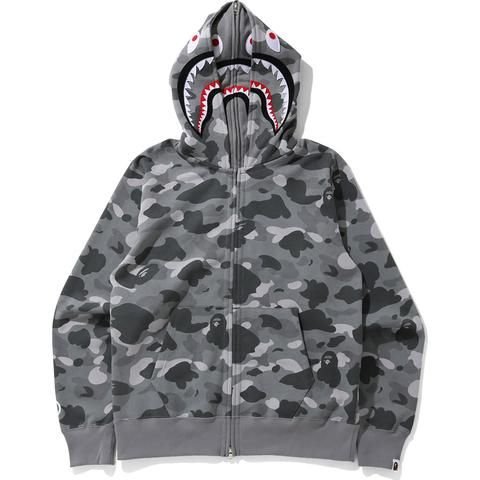In the constantly evolving world of fashion, only a handful of streetwear brands have maintained a consistent position at the top of the cultural pyramid. Among them, A Bathing Ape—better known as BAPE—stands tall. Its iconic BAPE hoodie is more than just a piece of clothing; it is a statement, a legacy, and a symbol of street culture’s influence on global fashion. From its humble beginnings in Tokyo to becoming a must-have in wardrobes across continents, the BAPE hoodie has reshaped the landscape of streetwear. Let’s explore how this legendary garment earned its status and why it remains one of the most sought-after hoodies today.
Table of Contents
ToggleOrigins of the BAPE Hoodie
The BAPE hoodie was born under the visionary direction of Tomoaki Nagao, famously known as Nigo. Founded in 1993, BAPE drew inspiration from hip-hop culture, Japanese design sensibilities, and a deep understanding of branding. The hoodie became a canvas for bold graphics, particularly the now-iconic “shark” motif, which helped set it apart in a saturated market. With designs featuring teeth, eyes, and zippers that zipped over the head, BAPE took a simple garment and transformed it into wearable art.
Initially, the hoodie was released in extremely limited quantities, creating a sense of scarcity that fueled desire among fans and collectors. Nigo’s marketing genius played a vital role in building mystique around the brand. By keeping production low and prices high, BAPE positioned itself as an exclusive label, accessible only to the lucky or well-connected few.
Influence of Celebrity Culture
These artists weren’t just wearing the hoodie—they were building it into their personal brand.As hip-hop continued to dominate pop culture, the BAPE hoodie became a marker of status and authenticity. Whether it was spotted in music videos or red carpet events, the hoodie started appearing everywhere. Its unique look—bold camo patterns, vibrant colors, and daring designs—made it easily recognizable and highly desirable.
The Signature Shark Hoodie
No discussion of BAPE is complete without highlighting the Shark Hoodie, arguably the most iconic piece the brand has ever released. First introduced in the mid-2000s, the Shark Hoodie featured a full-zip design that covered the entire face, turning the wearer into a walking symbol of the brand. The design drew inspiration from military motifs and Japanese pop culture, blending aggression and style in a way few garments ever had.
The shark face, combined with eye-catching camouflage and bright lettering, became a symbol of individuality. It broke away from the norm and invited wearers to express themselves loudly and unapologetically. With each limited release, BAPE ensured that owning a Shark Hoodie meant more than owning a hoodie—it meant being part of a cultural moment.
BAPE and Streetwear Evolution
The rise of streetwear in the 2000s and 2010s closely mirrored the growth of the BAPE hoodie’s influence. As traditional fashion houses began collaborating with streetwear labels, BAPE found itself at the intersection of luxury and youth culture. While brands like Supreme, Off-White, and Palace joined the conversation, BAPE remained a foundational force.
BAPE’s impact was not limited to style alone. It influenced how brands operated: drops became events, collaborations became the norm, and streetwear became a serious category within the fashion industry. The hoodie, once seen as a casual throw-on, was now a collector’s item, a financial investment, and a piece of cultural history.
Collaborations That Elevated the Hoodie
BAPE is known for its extensive and often surprising collaborations. From working with major brands like Adidas, Nike, and Puma to high-fashion houses and even media franchises like Star Wars, Marvel, and Dragon Ball Z, BAPE pushed boundaries. Each collab introduced new designs and concepts to the hoodie, keeping the brand fresh while honoring its legacy.
These partnerships were more than just marketing gimmicks—they introduced BAPE to new audiences and cemented the hoodie’s place in diverse fashion circles. Limited edition collaborations sold out within minutes, and resale prices soared. The hoodie evolved beyond clothing; it became a collector’s item, a statement of taste and allegiance.
A Global Phenomenon
Though it started in Tokyo’s Harajuku district, the BAPE hoodie now enjoys global recognition. . The brand’s expansion reflects not just its popularity, but its ability to resonate with a worldwide audience. This universal appeal has helped the hoodie remain relevant for over two decades, even as trends come and go.
Legacy and Future of the BAPE Hoodie
What makes the BAPE hoodie timeless is not just its design, but its story. It represents more than fashion—it captures the spirit of rebellion, creativity, and identity. It tells a story of how a niche Japanese brand broke global barriers and became a force in fashion history.
As new designers continue to reimagine the hoodie and streetwear evolves, BAPE remains deeply rooted in its original ethos.
The BAPE hoodie isn’t just a trend. It is a piece of cultural heritage, a symbol of where fashion has been and where it’s going. Whether you’re a longtime collector or a new enthusiast, owning a BAPE hoodie means embracing a legacy that continues to shape the world of style.
Final Thoughts
The BAPE hoodie stands as a true icon of streetwear. It blends art, fashion, and culture in a way few garments ever have. From its origins in Harajuku to its presence on the global stage, the hoodie remains a powerful symbol of self-expression. With every new release and collaboration, BAPE keeps pushing the boundaries of fashion while staying true to its roots. As streetwear continues to gain momentum, one thing is certain—the BAPE hoodie isn’t going anywhere. It is not just part of fashion history; it is shaping its future.
